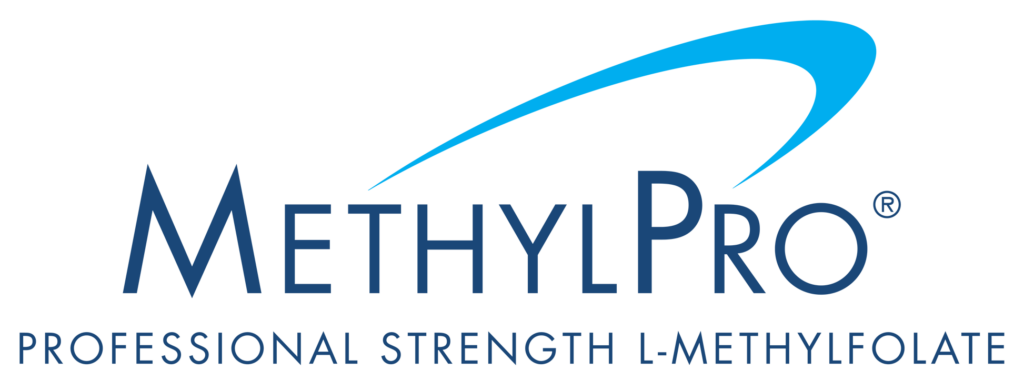Understanding the potency and nutritional value of our supplements is confusing when different brands use different units of measurement on their labels. Certain nutrients are measured differently, based on the recommended daily intake and how well each form is absorbed. Folate DFE is one of those confusing units of measurement.
Nutrition Units and the Consumer Experience
Let us set the scene:
After an enlightening conversation with your physician, you have decided to try supplementing a new nutrient. In this case, it’s methylfolate. So, you head home and start your due diligence; shopping online, comparing prices and reviews of supplement brands and products.
Your doctor recommended 10 mg of methylfolate per day. The units mg and mcg stand for milligrams and micrograms, respectively. The ratio of mg to mcg is 1:1000. That means 1 mg is 1000 mcg and 10 mg is 10,000 mcg.
You click on the images of the supplement facts for each product and run into trouble: Some of the product labels you are reading state 10 mg on the front and 17 mg DFE on the back, while others read 10 mg DFE on the front from 6 mg on the back.
Why are they using different units and what does it all mean? How do you know which product matches your doctor’s recommendation?
What is Folate DFE?
DFE stands for Dietary Folate Equivalent. This unit exists because folate, or vitamin B9, comes in several forms with drastically different levels of bioavailability. DFE levels the playing field.
Folate can be found naturally in some fruits and veggies. It is often added to fortified cereals and grains as synthetic folic acid. It can also be supplemented as folic acid or methylfolate.
Folate in food is often rendered unusable by the cooking process, and both food folate and folic acid must be converted to an active form once absorbed by the body. About half of the population cannot make this conversion efficiently, due to genetic variation (more about that here). Methylfolate, on the other hand, is the active form of folate. It is highly absorbable and can be used immediately, by everyone, without requiring any conversions.
Calculating Folate DFE
The issue here is knowing how much active folate is in your circulation, based on what forms of folate you are consuming. Because of the relatively low bioavailability of food folate, each 1 mg of food folate you consume is equal to 1 DFE [1].
Folic acid is much more absorbable than food folate. Therefore, 0.5 mg supplementary folic acid on an empty stomach is equal to 1 DFE (or 2x as potent as food folate)[1]. If it is folic acid in fortified food, or a supplement taken with a meal, 0.6 mg is equal to 1 DFE (or 1.7x as potent as food folate). Methylfolate (both glucosamine salt and calcium salt) provides a similar DFE to folic acid, and is also calculated as 0.6 mg methylfolate to 1 DFE [2]. Alternatively, you can multiply the mg of a supplement by 1.7 to get the DFE value.
Essentially, all of this just means that supplemental folate can be twice as efficient to help you reach your folate needs. You need a lot less folate in supplemental form than you do if you are relying on food as your folate source.
Different forms of Methylfolate
If your doctor has recommended methylfolate, it may be because methylfolate is effective for raising circulating active folate levels in all individuals, regardless of genetics. You may have a genetic variation in a folate processing gene, high homocysteine, or a folate deficiency caused by some other medical challenge.
In any case, do not expect a folic acid supplement to do the job of methylfolate.
Unfortunately, methylfolate can be confusing to spot on an ingredient label.
Effective Methylfolate Choices
L-Methylfolate
L-5-MTHF
L-5-Methyltetrahydrofolate
6(S)-L-MTHF
6(S)-L-Methyltetrahydrofolate
Quatrefolic
L-Methylfolate Calcium
Metafolin
Levomefolic Acid
Some are brand names, some are chemical structures, and they do differ in their bioavailability to some degree.
Ineffective Methylfolate Choices
Due to low bioavailability and unmethylated forms, stay away from any products containing the following:
D-5-MTHF
D-5-Methyltetrahydrofolate
6(R)-L-MTHF
6(R)-L-Methyltetrahydrofolate
Folinic Acid
Calcium folinate
Choosing a Product with Folate DFE
Now that you know what DFE means, and you know the forms of methylfolate to look for, you can read labels with a more discerning eye.
If your doc recommends 10 mg methylfolate, they likely do not mean 10 mg DFE. A true 10 mg supplement of methylfolate should provide nearly 17 mg DFE.
If the front of the bottle reads 10 mg (or its equivalent,10,000 mcg) the supplemental facts should state a higher DFE. Look for a product that states the source of L-methylfolate, too. A company that provides transparency to its sources is likely providing a higher quality product.

